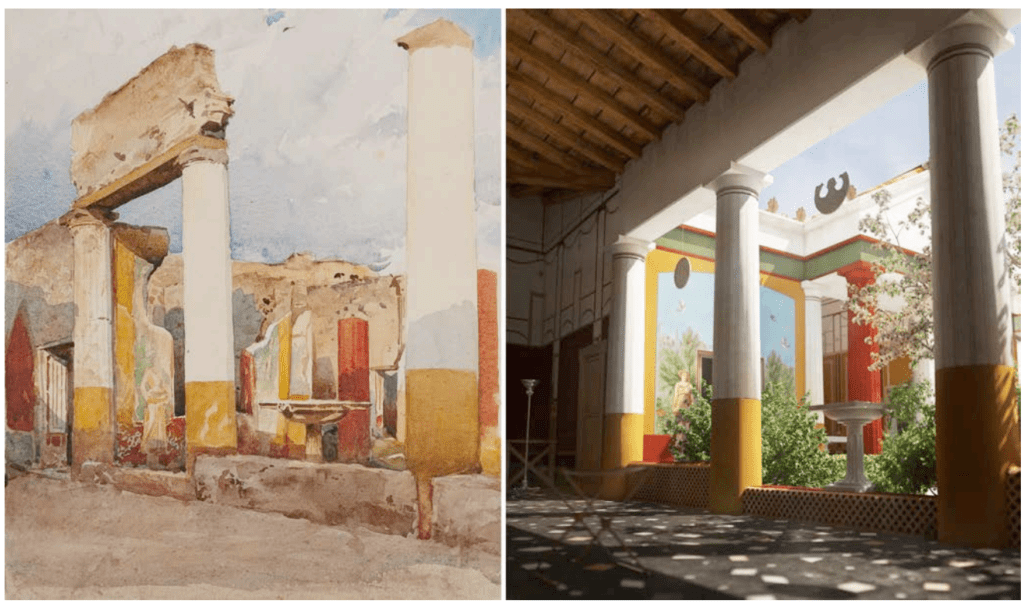
Comparison between the graphic source used for reconstructing the peristylium and the 3D model. Credit: Lund University
Since the year 2000, Swedish researchers have been working with Italian authorities to map and reconstruct the ancient Roman settlement of Pompeii which was obliterated by the eruption of Mount Vesuvius in 79 AD. Using advanced digital archaeology, the team from Lund University, Sweden, made 3D models of the ruined city offering a glimpse of how it must have looked like in its heyday.
Among the fully reconstructed city district is also the villa of a wealthy man called Caecilius Iucundus, interior included. The video below shows the splendour of Iucundus’ villa before all hell broke loose.
The Swedish Pompeii Project analyzed then reconstructed an entire Pompeian city-block, Insula V 1. To this aim, onsite archaeologists excavated the site until they found the floors of the buildings. Later, laser scanning was used to map and later model the district.
[button url=”http://www.pompejiprojektet.se/modelmeasuring.php” postid=”” style=”btn-info” size=”btn-lg” target=”_blank” fullwidth=”false”]Examine the 3D models of the Insula.[/button]
Among the most notable buildings they identified and reconstructed were three large wealthy estates, a tavern, a laundry, a bakery and several gardens.
Researchers also studied how the urban planning of the district evolved in time. For instance, the water and sewer system revealed the social hierarchies at the time. Many retailers and restaurants had been dependent on the neighbouring wealthy families whose villas supplied water from their reservoirs. Towards the end, before the eruption, conditions improved, though, as an aqueduct was built in Pompeii.
“By combining new technology with more traditional methods, we can describe Pompeii in greater detail and more accurately than was previously possible,” says Nicoló Dell´Unto, digital archaeologist at Lund University.
Ref: Emanuel Demetrescu, Daniele Ferdani, Nicolò Dell’Unto, Anne-Marie Leander Touati, Stefan Lindgren. Reconstructing the Original Splendour of the House of Caecilius Iucundus. A Complete Methodology for Virtual Archaeology Aimed at Digital Exhibition. Scires It, October 2016 DOI: 10.2423/i22394303v6n1p51









